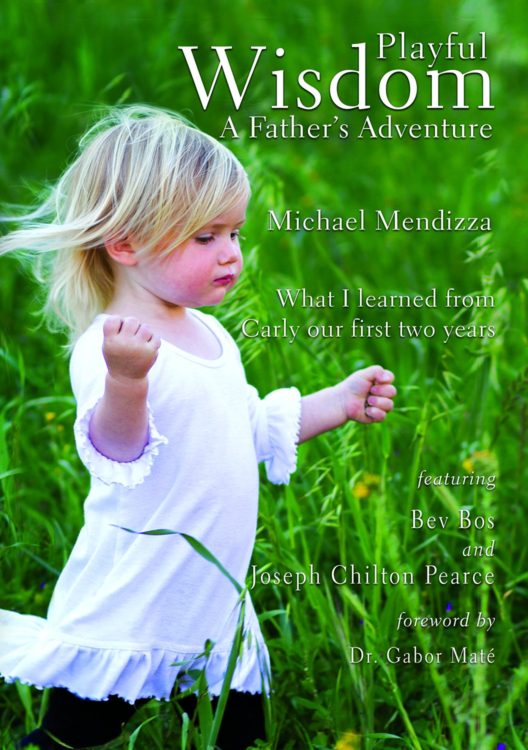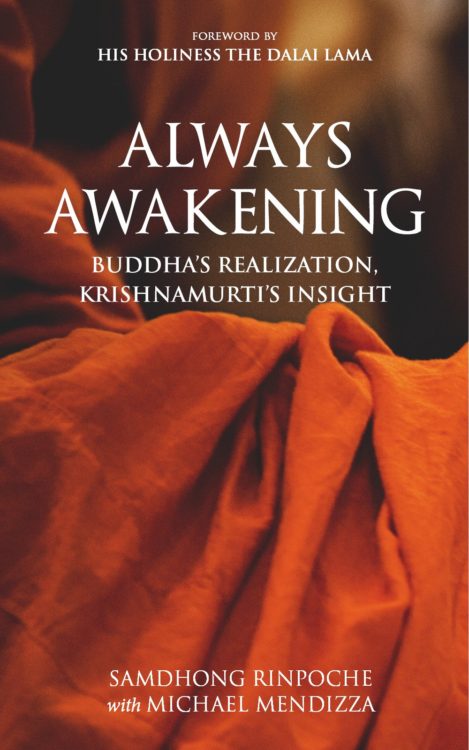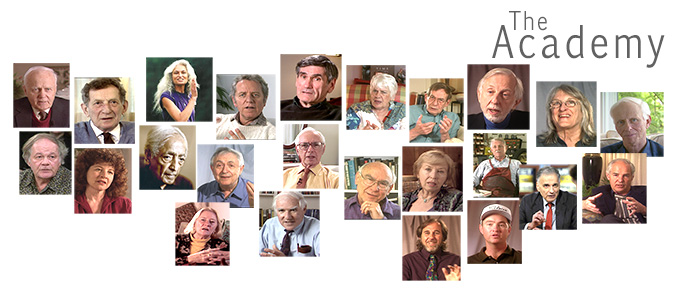Attention Opens The Door
Think of a pyramid with the wide base at the bottom. Biology and the sensory-motor brain are bedrock of our uniquely human experience and generate images of our physical relationship with the world; what we touch, taste, other senses and proprioception, how we move through the environment generating our present, immediate here-and-now experience. Resting on this base is the limbic, relational-emotional brain, producing what we call emotional-images or feelings of how we are doing inside as we experience what is outside, which is influenced by a much wider memory net. And way on top, the very tip of the pyramid, is the neocortex, what we think and imagine, a highly abstract image making system with vast access to past memory and an unlimited ability to project, imagine, forward. The entire system is built from the immediate concrete to greater and greater degrees of interpretive abstractions, thought and imagination being totally conceptual, fabrications, illusory. Once opened and developed, this capacity to imagine produces internal images that are so powerful that they trick the limbic and sensory-motor brains into reacting to what is imagined as if it were real, independent, and actual, meaning that the entire system assumes that what is being imagined is ‘real,’ and not just an image.
 Now, the ability of this relatively new capacity to create abstract mental images that overwhelm the entire field of perception evolved so fast and involved such powerful images that the brain failed to develop an internal mechanism that keeps track of what it is doing. The next imagined image explodes in perception, and like Chicken Little, we think the sky is falling, over and over again, like a snowball racing down a hill, getting bigger and bigger, without any brakes or parachute. And we call this ‘reality.’
Now, the ability of this relatively new capacity to create abstract mental images that overwhelm the entire field of perception evolved so fast and involved such powerful images that the brain failed to develop an internal mechanism that keeps track of what it is doing. The next imagined image explodes in perception, and like Chicken Little, we think the sky is falling, over and over again, like a snowball racing down a hill, getting bigger and bigger, without any brakes or parachute. And we call this ‘reality.’
For centuries sages have realized this crazy state of affairs and have proposed various systems, practices, meditations and rituals in hopes of bringing the system back to its natural order, that is, for the cognitive activity of the neocortex to function scientifically, without being overly influenced by its unbridled capacity to imagine all sorts of things; superstitions, fantasies and false projections, such as racism and nationalism, personal pride, vanity, greed, bigotry and various other self-centered fabrications.
Implicit in this challenge is the way that thought and imagination assumes that its’ functions represent the high altar of intelligence. True intelligence is infinitely woven into the two primary brain centers, sensory and relational. While a very useful tool the capacity to abstract, imagine and project into the future is just that, a tool. To mistake the tool for intelligence is at the very core of our personal and global crisis, which will continue to deepen and darken until we wake up to what we are doing.
Scientists know that a problem can’t be solved at the level of the problem. The capacity to imagine can’t correct or bring to order what it imagines. Thought can rearrange the furniture endlessly but the system and our attention remains stuck in the imaginary field that creates the problem in the first place. The illusion that one is solving the problem perpetuates the state that creates the problem. Expanding on the insights offered by physicist David Bohm, the following suggests that attention, and not more content as concept, is the key to this age old dilemma. Buddhists refer to this simple and sane insight as mindfulness. Complete attention to the present experience stops and therefore negates one’s percolating imagination, hopefully long enough to become aware of what we are doing to ourselves and others, and in that gap we might discover who and what we really are. Enjoy mm
Attention
Attention, not content, is the key that opens the door
Attention is illusive. It seems to be the focusing of something, but what? Whatever it is – it appears to morph and become what it perceives. The atmosphere carries clouds, but we don’t see the atmosphere. We don’t see light, rather we see what light bounces off of. Yet, this invisible stuff called attention is grand central station, the core capacity that defines our entire life. Everything we do, feel, think, remember, ponder, plan, and experience is shaped by the quality of attention we invest in each activity.
Like light, pure attention appears neutral, free of content and therefore meaning. Attention gains meaning by focusing on an experience. The quality of our attention, and our capacity to invest attention in each experience, gives meaning and defines how each experience influences our lives.
There are high and low levels of attention. Of the infinite variety and intensity of sensations and internal processes that take place each moment, only a tiny few are given attention and therefore become conscious experiences. Being healthy or sick, rested or tired, what we eat, the time of day, and many other factors dramatically affect the quality and our level of attention. And there are sensitivity thresholds of attention in relationship to various sensations or processes. Some people are more sensitive than others to specific influences, hearing for example. Some people have robust immune systems. Others are more vulnerable. These two qualities, the amount or volume of attention and our sensitivity threshold at that moment combine and define what we experience and what we experience is what we are. So, attention becomes a relative wild-card that defines what we experience and the meaning of that experience.
 Other factors that impact the quality of our attention, and therefore the quality of our lives, are time or sustainability and coherence or fragmentation. Some people are able to invest considerable attention in an activity for a sustained period of time. They can, as we say, “pay attention.” Others can’t. They drift, or disassociate. Attention jumps from one thing to another. Another defining factor is the ability to focus on a given activity, coherent attention, as opposed to fragmented attention, splitting attention in two or more ways at the same time. A third factor is the preexisting emotional context or history we have with any given experience. If similar experience was painful in the past, we will be guarded when we invest attention in the current experience. Our attention will be skewed or biased and this will prejudge the influence and meaning we give to the experience.
Other factors that impact the quality of our attention, and therefore the quality of our lives, are time or sustainability and coherence or fragmentation. Some people are able to invest considerable attention in an activity for a sustained period of time. They can, as we say, “pay attention.” Others can’t. They drift, or disassociate. Attention jumps from one thing to another. Another defining factor is the ability to focus on a given activity, coherent attention, as opposed to fragmented attention, splitting attention in two or more ways at the same time. A third factor is the preexisting emotional context or history we have with any given experience. If similar experience was painful in the past, we will be guarded when we invest attention in the current experience. Our attention will be skewed or biased and this will prejudge the influence and meaning we give to the experience.
It is easy to see that the combined influence of these qualities dramatically changes the nature and quality of our experience – and this dramatically alters what and in what way experiences define our lives. Superficially, which is our normal state, we assume that we are objective. When we become aware of the many ways that the quality of our attention varies, moment to moment, we discover that we are not objective. What we call true, sane and objective is relative, not absolute. So, in a general way, we agree that our relative reality conforms to that of most and therefore we are considered normal and somewhat sane. And this general and somewhat vague norm becomes reality and this is where we live, except sometimes.
I like the image of the vast electromagnetic spectrum and the thin slice called the visible spectrum that defines what we see in our normal reality. Clearly there is much more that we do not see. The same is true for each of our senses and for wavelengths of energy from the Newtonian concrete to the Quantum abstract.
My friend J. Krishnamurti, and I feel comfortable using that word friend, said often that the “content of consciousness is consciousness,” to which I add, “as we experience it.” Such a strange statement. Like light, the sky and attention, what we perceive as consciousness is its content. What we call reality is the content attention holds. Examining deeper there must be sky before clouds, light before the object light reveals, and attention before it morphs into the endless stream of content we experience as reality. Holding this obvious fact, ask the question; are we pure attention without content, or are we the content attention illuminates? On which side this coin lands changes everything.
The Tibetans, and perhaps other traditions, say both. There is a relative reality created by the content that defines our consciousness, and there is a different, absolute reality of pure attention without any content. When attention is focused on the content of consciousness, that content is our reality, which is the world as we know it. When consciousness is free of this conditioned content, this represents a different reality, a state that content can never capture, know or understand.
We only “know” consciousness because of its content. We see clouds because of the sky but we don’t see the sky. But then, who or what are we really? The clouds or the sky – what light bounces off of or pure light? This question is perhaps the most important in human history. The content of consciousness, the known, expresses as culture and its inner twin, the images we have about ourselves, our social self or ego. The known is the past, is knowledge, but more fundamentally the known, as knowledge, is an abstraction, like imaginary clouds floating in an imaginary sky. The mental images that knowledge is are like video programs on a screen. They appear to move and be alive but they aren’t. The images that past knowledge produces are counterfeits of life. Zombies come to mind. Something that appears to be alive but is in fact – not.
This collective known brought us civilization and technology and also created the sixth-great-extinction on planet earth, snowballing exponentially, and we are each identified with that. That abstract, dead content, which is likely to wipe out 95% of lifeforms as we know it, is who we think we are. How will continued identification with that content of consciousness serve our children as this snowball continues to grow and then – come crashing down? We are identified with something dead and don’t know it. And more of the same, the hope that technology dangles, deepens our doomed identity, for both technology and our identification with the past, self and culture, come from the same root, the same false abstracted identity. Handing a starving person a menu will not save him. We are identified with the menu and not with life that gives life.
We are faced with a breakdown of general social order and human values that threatens stability throughout the world. Existing knowledge cannot meet this challenge. Something much deeper is needed, a completely new approach. I am suggesting that the very means by which we try to solve our problems is the problem. The source of our problems is within the structure of thought itself.
David Bohm, Physicist
If continued identification with abstract mental images of the dead past, knowledge, self and culture, is suicidal, and it may be, what would identification with life feel like? This brings us to one of Krishnamurti’s most distilled insights.
It is the responsibility for each individual to bring about their own transformation (of reality, identity and therefore perception-action), which is not dependent on knowledge or time (knowledge and time being the dead past).
Such a radical revolution in the mind occurs much deeper than content, at the very root level called attention, opening perception to insight, a quality of fresh and new patterns and possibilities not found when looking in the rear view mirror. Coming from nature, the meaning we unfold from these insights and their actions are fundamentally whole, appropriate, organic and ecological. Identification with this spontaneous, always awakening quality of attention, is identification with life, which is creation, creation grounded in nature and not in imagined, dead abstractions.
Recall, we become what we give our attention to. If we are identified with ideas, nationalism, racism and white supremacy, preoccupied being a Catholic, Muslim, Buddhist or Jew, or with science, the latest technology, that is what we are, at the exclusion of everything else. Imagine being identified with life, with nature and the creative processes life and nature imply. Imagine knowing deeply, fundamentally that you are the son or daughter of life and not the abstracted images created by culture. No such image could hold you. You would be unconditionally free and that freedom would unleash in you tremendous power. But this deep, fundamental knowing, this true identity, cannot be realized if we believe we are the image thought-as-self or thought-as-culture have created, and have done so for thousands of years creating a field, like the gravitational force of Jupiter, that holds us. The source that created this field cannot be negated by that source, which is what our addiction to content attempts to do.
The key to experiencing our true identity is attention. There is a quality of attention that is not occupied, and therefore not trapped and limited by content, by the known. In that attention thought-as-self and thought-as-culture do not exist. The first step is for you and me to discover this new quality of attention and true identity in ourselves, and then, like the oxygen masks dangling in a crashing airplane, adjust the straps of the new identity for our children. Then, breathe deeply.


